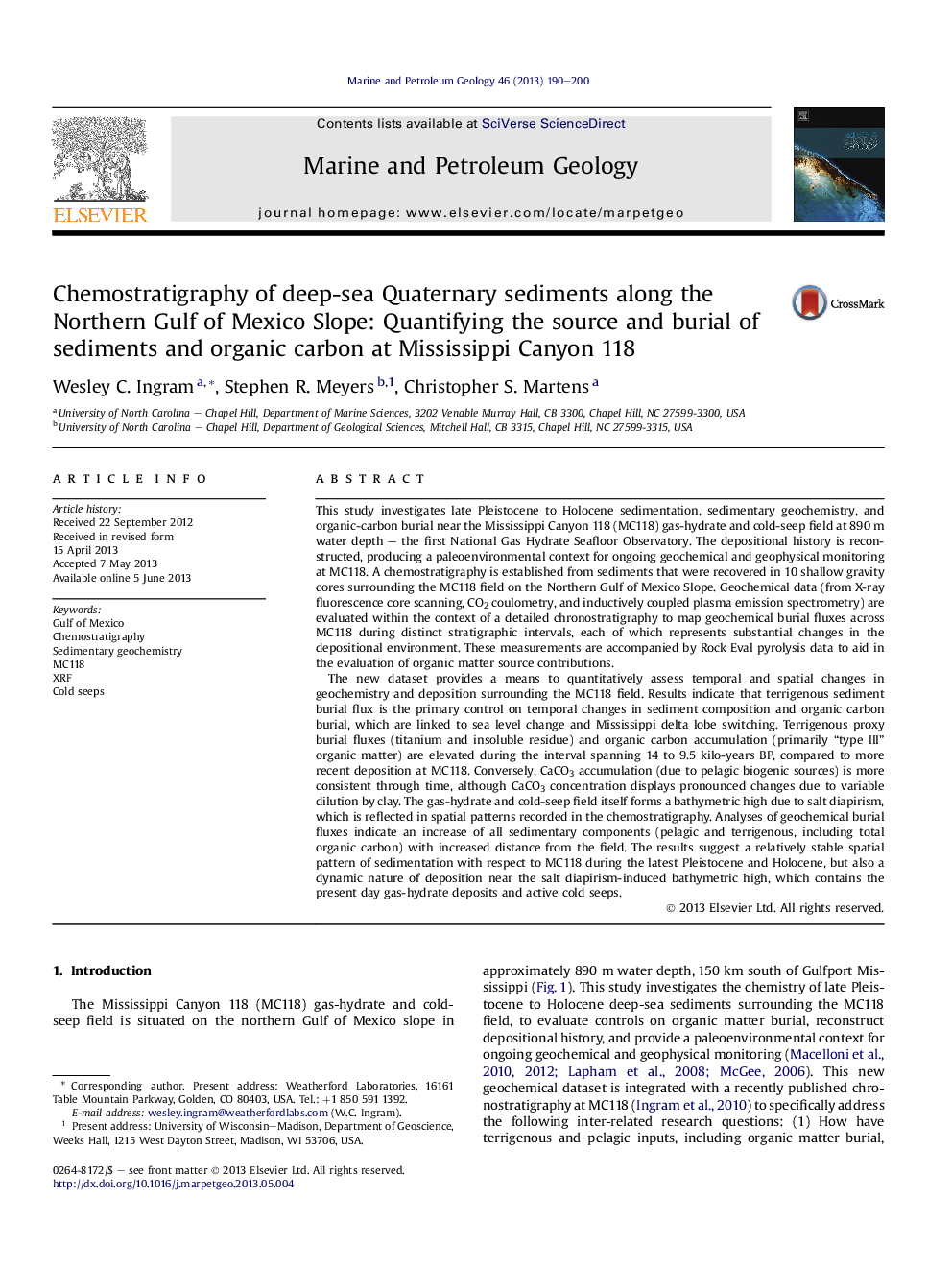| کد مقاله | کد نشریه | سال انتشار | مقاله انگلیسی | نسخه تمام متن |
|---|---|---|---|---|
| 4695713 | 1637178 | 2013 | 11 صفحه PDF | دانلود رایگان |
• Sedimentary geochemistry is connected to sea-level rise and the Mississippi delta.
• Primary productivity from pelagic (CaCO3) sedimentation has remained consistent.
• Lithogenic inputs control sediment composition along the Gulf-of-Mexico slope.
• Terrigenous organics are substantial and even more so during the Late Pleistocene.
This study investigates late Pleistocene to Holocene sedimentation, sedimentary geochemistry, and organic-carbon burial near the Mississippi Canyon 118 (MC118) gas-hydrate and cold-seep field at 890 m water depth – the first National Gas Hydrate Seafloor Observatory. The depositional history is reconstructed, producing a paleoenvironmental context for ongoing geochemical and geophysical monitoring at MC118. A chemostratigraphy is established from sediments that were recovered in 10 shallow gravity cores surrounding the MC118 field on the Northern Gulf of Mexico Slope. Geochemical data (from X-ray fluorescence core scanning, CO2 coulometry, and inductively coupled plasma emission spectrometry) are evaluated within the context of a detailed chronostratigraphy to map geochemical burial fluxes across MC118 during distinct stratigraphic intervals, each of which represents substantial changes in the depositional environment. These measurements are accompanied by Rock Eval pyrolysis data to aid in the evaluation of organic matter source contributions.The new dataset provides a means to quantitatively assess temporal and spatial changes in geochemistry and deposition surrounding the MC118 field. Results indicate that terrigenous sediment burial flux is the primary control on temporal changes in sediment composition and organic carbon burial, which are linked to sea level change and Mississippi delta lobe switching. Terrigenous proxy burial fluxes (titanium and insoluble residue) and organic carbon accumulation (primarily “type III” organic matter) are elevated during the interval spanning 14 to 9.5 kilo-years BP, compared to more recent deposition at MC118. Conversely, CaCO3 accumulation (due to pelagic biogenic sources) is more consistent through time, although CaCO3 concentration displays pronounced changes due to variable dilution by clay. The gas-hydrate and cold-seep field itself forms a bathymetric high due to salt diapirism, which is reflected in spatial patterns recorded in the chemostratigraphy. Analyses of geochemical burial fluxes indicate an increase of all sedimentary components (pelagic and terrigenous, including total organic carbon) with increased distance from the field. The results suggest a relatively stable spatial pattern of sedimentation with respect to MC118 during the latest Pleistocene and Holocene, but also a dynamic nature of deposition near the salt diapirism-induced bathymetric high, which contains the present day gas-hydrate deposits and active cold seeps.
Journal: Marine and Petroleum Geology - Volume 46, September 2013, Pages 190–200
